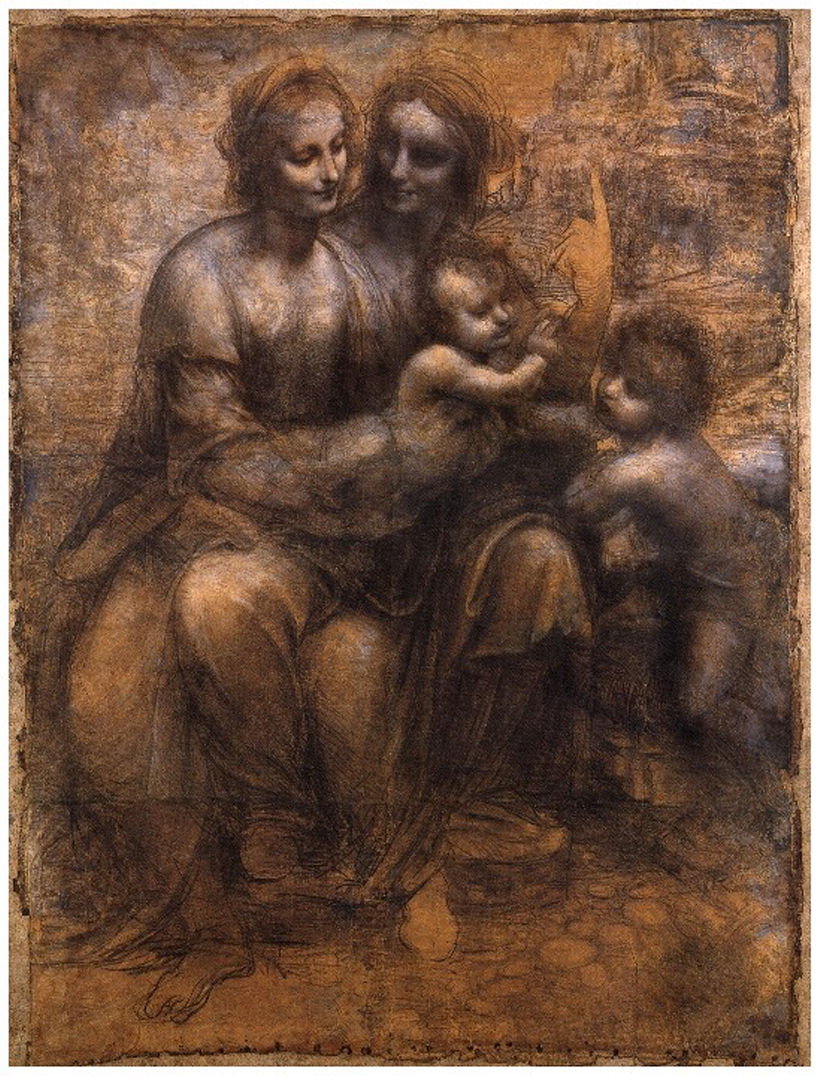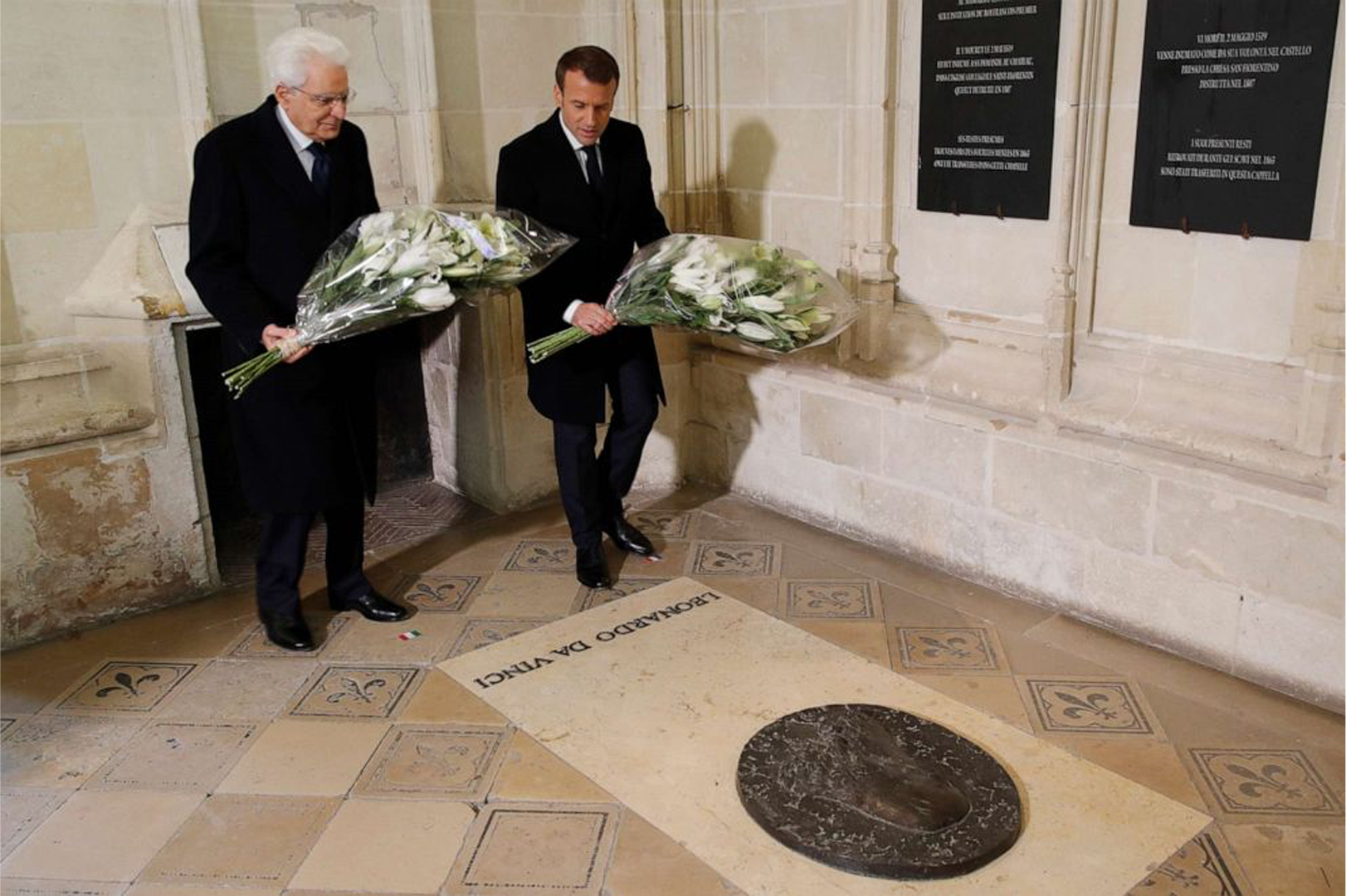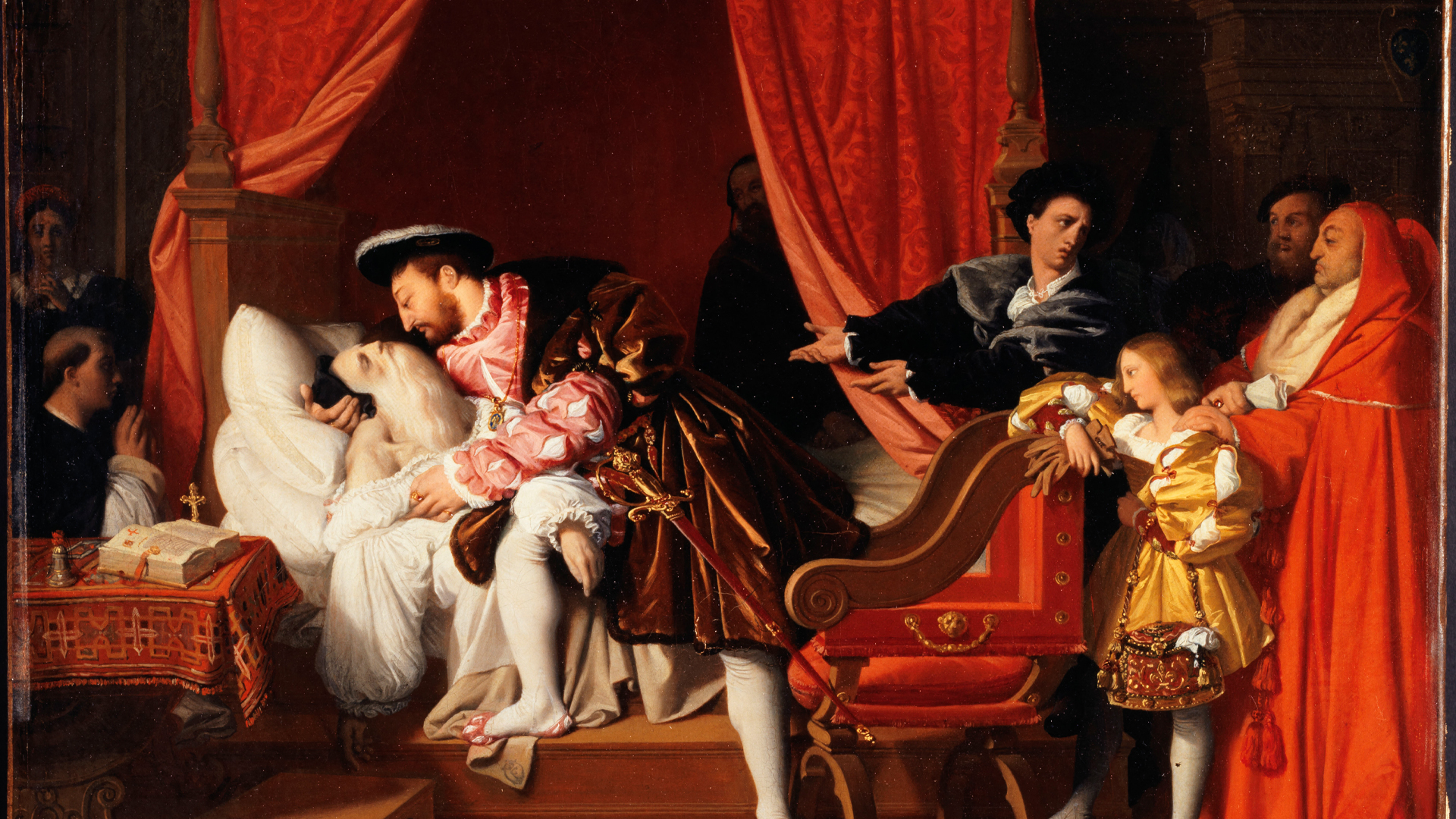Considered one of the greatest minds the world has ever known, May 2nd marks the anniversary of the death of Leonardo da Vinci. His legacy as a polymath - known for his paintings, sculptures, architectural designs, and ideas on engineering and science - is still studied worldwide. Many revere his brilliance calling him “the most talented and influential humans in the history of the Western World.”
During the Second Italian War in 1499, da Vinci was forced to flee Milan, where he would eventually work as an engineer and architect for the military. Later the next year, he would return to Florence and paint The Virgin and Child with St. Anne and St. John the Baptist.

The Virgin and Child with St. Anne and St. John the Baptist painted by Leonardo da Vinci
He traveled throughout Italy with his new patron, Cesare Borgia, who was the son of Pope Alexander VI. It was at this time that he would create accurate maps of the area, a practice that was uncommon at the time. The creation of these maps would influence future cartographers.
Leonardo returned to Florence, rejoining the Guild of Saint Luke, and worked alongside Michelangelo to paint The Battle of Anghiari and its companion piece, The Battle of Cascina.
Years later, he contributed to the Belvedere courtyard in the Apostolic Palace at the Vatican, where he would collaborate with Raphael and again with Michelangelo. He was hired by King Francis I of France after he overtook Milan. The king and da Vinci became close and Leonardo was permitted to live in Clos Luce, a residence nearby the king at the royal Chateau d'Amboise in France. This is where he spent his final years.
On May 2nd, 1519, Leonardo da Vinci died in Cloux Castle, France. There is not much information about his death, but it is assumed that he died of a stroke. On the day of his burial, there were three large masses and thirty silent masses held in four separate churches throughout Amboise, France. In accordance with his will, a funeral procession traveled from Leonardo's chateau in Cloux to the cemetery of the church of Saint-Florentin. The coffin was carried by priests of the church of Saint-Florentin, where the clergy of the four parishes gathered, along with 60 paupers carrying large candles.

French Presiden Emmanuel Macron and Italian President Sergio Mattarella gather for the 500th anniversary of da Vinci's death
During the Huguenot Wars (1562-1598), the cloister where da Vinci was buried was destroyed. His remains were considered lost until an excavation of the grounds around the chateau revealed bones. Many believed that they were the bones of da Vinci and they were moved to Hubertus Chapel of Amboise Castle.
300 years later in 1818, Jean Auguste Dominique Ingres was commissioned by the French Ambassador, Comte de Blacas, to paint while in Rome The Death of Leonardo da Vinci. The painting depicts the dead body of da Vinci being held by France's Francis I as he witnessed da Vinci’s final breath. The painting was inspired by Italian artists, using expressive contortion of the body for both Leonardo and King Francis, and can currently be seen at Petit Palais, Paris.
On the 500th anniversary of the death of Leonardo da Vinci in 2019, major exhibitions were shown of his work in Rome and the Vatican. More than five centuries after his passing, Leonardo da Vinci’s legacy remains alive in creations like the Mona Lisa and the Last Supper – two of the most recognizable works of art in the world. As well as being a talented painter, however, Leonardo was also a skilled scientist and engineer with an incredible range of interests. He will continue to be remembered as one of history's greatest artists.
AJ Forrisi
Assistant Editor for America Domani, AJ Forrisi is a Brooklyn-based writer and photographer. His work focuses on food, travel, sports, landscapes, and urban scenes. You can find him on Instagram @aj.photo.works.

